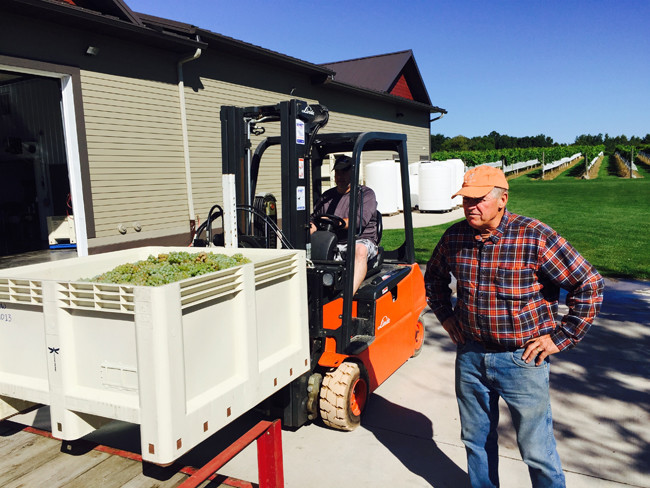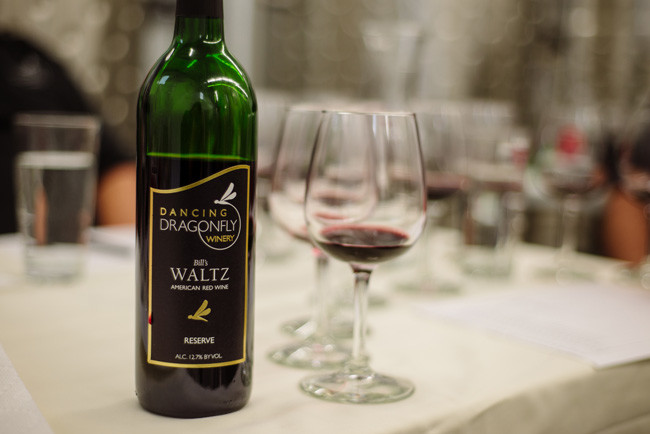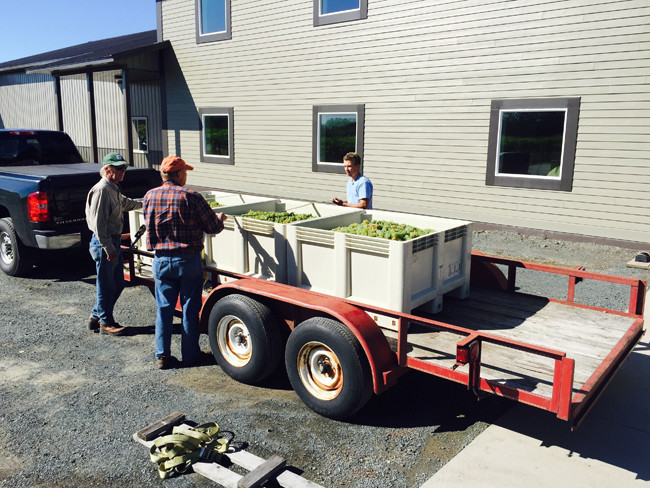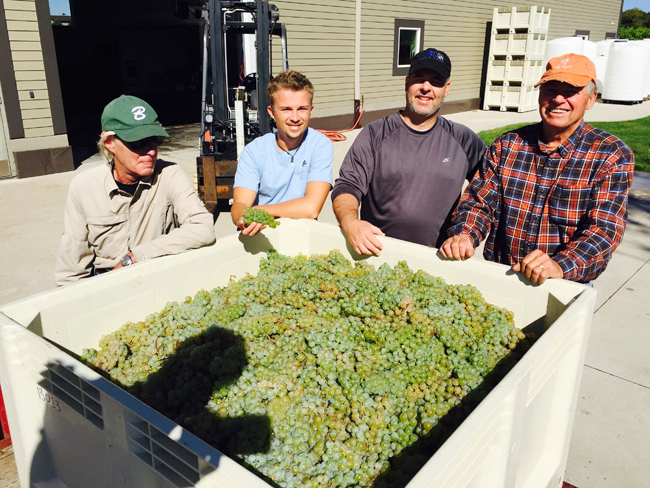
This post is sponsored by Dancing Dragonfly Winery.
Getting Ready
Dancing Dragonfly Winery is passionate about great wine, and great wine begins with a well-timed harvest. After months of tending, the grape clusters — some 30,000 vines on 40-plus acres — are ready for picking. The harvest starts the first weekend in September and continues through the first or second weekend in October at our St. Croix Falls vineyard, located less than an hour from Minneapolis and St. Paul.
There are a few factors that play into choosing the right time to harvest. These include brix (sugar), pH (acid), and a grape variety’s ability to hang on the vine. Each variety has a different set of parameters, and the ultimate decision is left to our winemaker.

It is time to harvest!
As part of our commitment to community, we use volunteer, non-profit groups from our area to harvest. We donate to each group’s charity for every pound of grapes picked. Groups of 10 to 25 people arrive on Saturdays at about 7 a.m. Picking is done in the morning when the fruit is cool, to preserve its natural characteristics.

After a breakfast of coffee and rolls, the fieldwork begins! The work goes quickly, with plenty of totes, conversation, and harvesting. Each worker is outfitted with a harvest tool and a yellow tote. Each tote will hold about 20 pounds of fruit. The workers gather the fruit and stack the totes. Staff is on hand to sort and weigh the harvest. It doesn’t take long before totes become bins and pounds become tons. An average morning of picking might yield five tons of fruit.
By 1 p.m., the vines are bare and the harvest has been brought to the production building. The grapes are weighed for our records (to help predict yield in future years) and so we can compensate the non-profit organizations of our hearty group of workers.
The work is complete in the vineyard but just beginning in the winemaking area. For our vineyard workers, it is time to relax. We cook up burgers or pizza to say thanks for the help. Most of the group will take seats on the patio and enjoy the rest of a beautiful fall day.

Making Wine
It is a different story in the production building. The process of turning fruit into wine has just begun. It is not uncommon to turn 50 tons of fruit into wine in a typical season. The macro bins of fruit, each weighting 1,000 pounds, are dumped into a crusher and destemmer. The machine does just what is says, taking the stem out of the cluster and splitting the grapes.
White wines are typically the first grapes to be harvested. After the fruit is run through the crusher and destemmer, the slurry is pumped to a press where the juice is pressed and separated from the skins. The juice is pumped to a tank, where fermentation and the process of winemaking begins. White wines can be brought to market in as little as six months.
Red wines are a little different. The grape pulp and juice are fermented together. This helps to impart flavor, body (tannins), and the beautiful red color to the wine. After fermentation, the wine is pressed off and then held it a tank.
The wine will then be aged, filtered, oaked, and possibly blended with other grape varieties. These are just a few of the steps that can be chosen as a wine makes its way from the vineyard to the table.



Comments are closed.